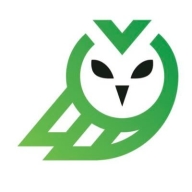

Grafana and meshIQ Kafka compete in the data monitoring and analytics space. meshIQ Kafka holds the upper hand due to its extensive integration features and reliability despite a higher price point.
Features: Grafana features intuitive dashboard customization, a wide range of plugins, and alerting capabilities for IT monitoring. meshIQ Kafka offers robust data streaming, superior integration features, and can handle complex data flows, making it valuable for handling various data sources.
Ease of Deployment and Customer Service: Grafana is known for its straightforward installation and strong community support with numerous resources. meshIQ Kafka's setup requires more complex configurations but is supported by strong customer service.
Pricing and ROI: Grafana offers lower upfront costs, beneficial for smaller projects on a budget, while meshIQ Kafka justifies higher initial costs with a strong ROI due to its advanced features and reliability for large-scale operations.

Grafana is an open-source visualization and analytics platform that stands out in the field of monitoring solutions. Grafana is widely recognized for its powerful, easy-to-set-up dashboards and visualizations. Grafana supports integration with a wide array of data sources and tools, including Prometheus, InfluxDB, MySQL, Splunk, and Elasticsearch, enhancing its versatility. Grafana has open-source and cloud options; the open-source version is a good choice for organizations with the resources to manage their infrastructure and want more control over their deployment. The cloud service is a good choice if you want a fully managed solution that is easy to start with and scale.
A key strength of Grafana lies in its ability to explore, visualize, query, and alert on the collected data through operational dashboards. These dashboards are highly customizable and visually appealing, making them a valuable asset for data analysis, performance tracking, trend spotting, and detecting irregularities.
Grafana provides both an open-source solution with an active community and Grafana Cloud, a fully managed and composable observability offering that packages together metrics, logs, and traces with Grafana. The open-source version is licensed under the Affero General Public License version 3.0 (AGPLv3), being free and unlimited. Grafana Cloud and Grafana Enterprise are available for more advanced needs, catering to a wider range of organizational requirements. Grafana offers options for self-managed backend systems or fully managed services via Grafana Cloud. Grafana Cloud extends observability with a wide range of solutions for infrastructure monitoring, IRM, load testing, Kubernetes monitoring, continuous profiling, frontend observability, and more.
The Grafana users we interviewed generally appreciate Grafana's ability to connect with various data sources, its straightforward usability, and its integration capabilities, especially in developer-oriented environments. The platform is noted for its practical alert configurations, ticketing backend integration, and as a powerful tool for developing dashboards. However, some users find a learning curve in the initial setup and mention the need for time investment to customize and leverage Grafana effectively. There are also calls for clearer documentation and simplification of notification alert templates.
In summary, Grafana is a comprehensive solution for data visualization and monitoring, widely used across industries for its versatility, ease of use, and extensive integration options. It suits organizations seeking a customizable and scalable platform for visualizing time-series data from diverse sources. However, users should be prepared for some complexity in setup and customization and may need to invest time in learning and tailoring the system to their specific needs.
meshIQ Kafka offers a comprehensive platform designed to streamline event streaming processes. By leveraging advanced features, this platform enhances data processing capabilities, ensuring efficient integration and analysis for businesses seeking robust event communication.
Designed for those familiar with event streaming, meshIQ Kafka provides a solution built for scalability and performance. It facilitates seamless integration across architectures, promoting real-time analytics and data pipeline efficiency. Its architecture supports resilience and adaptability, making it suitable for high-demand environments. Integration with existing infrastructures is simplified, allowing organizations to utilize their data assets effectively.
What are the core features of meshIQ Kafka?
Why consider meshIQ Kafka for your organization?
MeshIQ Kafka is widely adopted in industries such as finance, healthcare, and retail. In the financial sector, it powers real-time transaction processing and fraud detection systems. Healthcare organizations use it for patient data streaming and analysis, while retail businesses implement it to optimize customer experience through data-driven insights.
We monitor all Application Performance Monitoring (APM) and Observability reviews to prevent fraudulent reviews and keep review quality high. We do not post reviews by company employees or direct competitors. We validate each review for authenticity via cross-reference with LinkedIn, and personal follow-up with the reviewer when necessary.